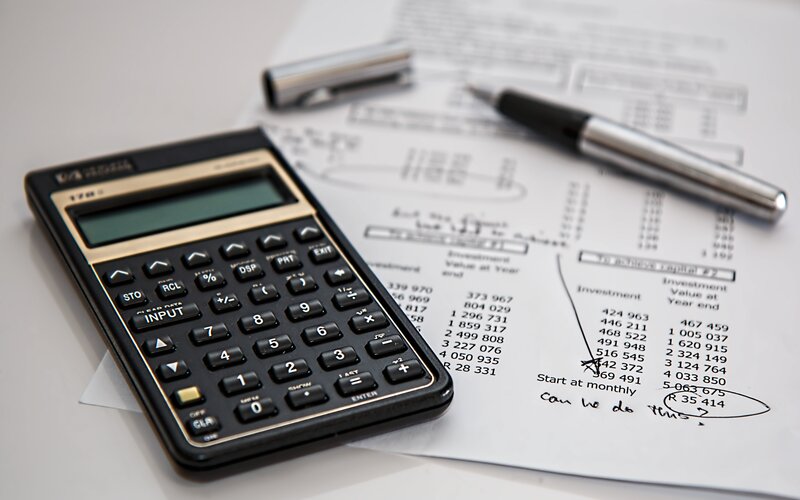Just as it takes money to make money, it’s easier to buy another house when you already own one. Accessing the equity in your existing property could mean you’re able to buy that investment property or holiday home on the coast without saving another cash deposit.
What is equity in a property?
Put simply, equity is the proportion of your property you own outright. You can work it out by taking the value of the property and subtracting the amount you still owe on your loan to purchase it.
Let’s say James bought a $500,000 property in Adelaide with a 20% deposit ($100,000) and a $400,000 home loan. Upon settlement, his equity is simply the deposit amount - $100,000. As he pays off his home loan, he’s building up more and more equity, until he ultimately pays off the loan and owns the property outright.
But keep in mind equity is based on the property’s current value, not the price he paid for it. Let’s say after one year, James has paid $25,000 off his $400,000 loan (so $375,00 still owing). But at the same time, the property market has boomed, and his home is now worth $600,000.
James' equity in his home is now $225,000 [$600,000 (updated value) - $375,000 (amount still owing on the loan)], meaning James has built up a nice sum of equity just by being in the property market and meeting his regular mortgage repayments.
How can you use equity from refinancing to buy a second property?
You can refinance your home loan to access your equity, then use this amount as a deposit to buy another property. However, lenders generally calculate usable equity based on 80% of the property value (not the full value), then subtract the outstanding debt.
In James' case, if he wanted to access the usable equity in his home, the value of his home would be calculated at $480,000 (80% of $600,000) less the amount still owing on his loan ($375,000). This puts his usable equity at $105,000.
Lenders do this because they want to ensure borrowers maintain a certain amount of equity in their properties to provide a cushion against negative equity. This is where the amount owed on the loan is more than the property is worth. Although this is uncommon in Australia, it can still happen in falling markets or select locations.
The threshold many lenders generally apply is maintaining 20% equity in a property. (This is also why Lenders Mortgage Insurance (LMI) normally applies to loans with a loan-to-value ratio (LVR) of more than 80%.)
James buys up
So, James decides he’s going to use the equity available to him and buy a second property, a beachside apartment that’s come on the market for another $500,000.
To access his equity, he refinances his current loan to borrow an extra $100,000. He then uses this as a deposit on the beach property and takes out another $400,000 loan to pay for it. Keep in mind, he will still have to prove to his lender that he’ll be able to pay off both loans simultaneously.
James now has the following assets and liabilities to his name:
-
A $600,000 property in Adelaide on which he now owes $475,000 (the $375,000 he already owed plus the $100,000 extra he borrowed as a deposit for the new property)
-
A $500,000 beachside property on which he owes $400,000
It often becomes easier to buy another house once you already own one. You can see how property investors can use this domino effect to their advantage. Simply put, the more properties you own, the more available equity you have for future borrowing and expanding your property portfolio.
How to calculate your equity
If maths makes you teary, Savings.com.au's Home Equity Calculator can work out roughly how much equity is in your home. Just enter:
-
The property’s current value (you may need to get an official valuation done before refinancing but a general valuation from a real estate website may give you a ballpark figure)
-
Your outstanding loan balance
-
The interest rate on your desired loan (if you’re thinking about refinancing)
-
And how long you want the loan to be
Using equity to buy a second home
Besides refinancing, there are other options available which allow you to tap into your home's equity to buy new properties.
Line of credit loan
A line of credit loan is often more expensive than a traditional home loan, but it can be more flexible. These loans provide access to a set level of credit based on your home’s equity without the need to apply for another loan. You can use the funds as needed and interest is only charged on the amount that you use. Whatever you borrow is secured against the equity you have in your property.
Cross-collateralisation
Using more than one property as security on a home loan is known cross-collateralisation. This is an alternative strategy James could use to buy his beachfront property. Instead of refinancing his current home loan, he could try to borrow the full $500,000 for the new property and put up his equity as security. This new loan is secured against both the entire beachfront property and his equity in his home.
In practical terms, this means James would have $1.1 million in property secured against $875,000 debt. This still keeps James under the 80% LVR threshold (at 79.55%) so his lender may potentially allow it. However, some people consider this to be a high-risk strategy because if James can’t service the debt on the loan for some reason in the future, he stands to lose the two properties.
Reverse mortgage
Reverse mortgages allow people to borrow against their equity, but don’t require them to make repayments while they still live in the home. Instead, the interest compounds over time, and borrowers only have to repay the balance in full when they either sell the property or pass away. People under a certain age may not qualify for a reverse mortgage, as they tend to be geared towards older Australians who are ‘asset rich but cash poor’.
It’s also advised to seek professional financial advice before seeking a reverse mortgage to ensure you fully understand the terms and conditions and that it’s the best option for your financial circumstances.
Redraw facility
Any extra repayments you make on your home loan beyond the minimum monthly/fortnightly requirement can be accessible through a redraw facility (if your loan has one). These extra payments not only effectively reduce the interest you’ll pay over the life of your loan but can also cut the term of the loan. The funds can also be accessed if you decide to purchase another property or need them for any other purpose.
How to raise your home's equity
There are several ways you can boost the equity you have in your property. These include:
-
Renovating to boost the value of the property by more than what the renovation costs, including adding another living space, bathroom, or putting in a pool.
-
Making larger mortgage repayments
-
Making more regular repayments - weekly or fortnightly instead of monthly
-
Using a home loan offset account to effectively reduce the amount owing on the loan
What to watch out for when using equity to buy a second property
As with any major financial commitment, refinancing to access a property’s equity is certainly not risk-free.
If you’re using the equity to put a deposit on a second property, you’ll essentially be paying off two home loans instead of one, so you’ll need to be sure your cash flow can handle it. Also, refinancing your current home to access equity effectively increases your debt. That means you’ll paying your loan off for longer and paying much more in interest over the life of the loan.
You also need to consider the consequences property investment will have on your investment portfolio. Having most of your money tied up in the property market may leave your wealth overly concentrated in that one asset class, instead of being spread across a diversified portfolio of cash, shares, and property. It means if the property market experiences a widespread dip, so too could your wealth.
Also, if you decide to cross-collaterise to expand your property portfolio, it exposes you to the risk of losing all your securitised properties should you become unable to service the loan.
Have a safety net available
If you’re purchasing a second property as an investment property and will be relying on rental income to help you meet your home loan repayments, be mindful that there may be periods where you may not be receiving any. This can be due to your property not having tenants or the tenants you have not paying their rent for some reason.
Landlord insurance can help in some cases, as well as having a buffer of emergency cash stockpiled to help you stay on top of servicing your home loans. You’ll need this in any case to cover other unexpected or ongoing costs of maintaining an investment property as well as the expenses associated with your own home.
Is refinancing expensive?
Refinancing a mortgage can be costly, but these costs can be recouped over time if you’re refinancing to a loan with a lower interest rate. Don’t forget the other fees you’ll likely be hit with, including mortgage discharge fees, upfront fees, and potential break costs if you’re on a fixed mortgage. These can run into the thousands of dollars.
Our Cost of Refinancing Calculator can give you some idea of what you might be up for.
If you're in the market for check whether refinancing is a feasible option for you, the table below features home loans with some of the lowest interest rates on the market:
Lender Home Loan Interest Rate Comparison Rate* Monthly Repayment Repayment type Rate Type Offset Redraw Ongoing Fees Upfront Fees Max LVR Lump Sum Repayment Additional Repayments Split Loan Option Tags Row Tags Features Link Compare Promoted Product Disclosure
Promoted
Disclosure
Promoted
Disclosure
Promoted
Disclosure
Savings.com.au’s two cents
As a property owner, solid home equity can put you in a strong financial position and provide you with considerable borrowing power. Buying a second property using the equity in your home as a deposit, as opposed to saving up a cash deposit, has two major benefits:
-
You can buy a second property sooner: Saving up a cash deposit to purchase another property can take several years. During that time, property prices may increase significantly. Purchasing a second property using your home equity can help you buy it sooner and at a lower price if home values are rising.
-
You’re not dipping into your cash reserves: Having an emergency stash of cash is important for every household. When you’re buying a second property, having a cash safety net can become even more important so it can be a good move to access your equity as an alternative source of funds.
However, with increased leverage comes higher risk, so properly assess your current situation and make a decision as to whether you can reasonably afford to service and pay off a second home loan (sometimes referred to as ‘stress-testing’). Our home loan calculator can help you work this out.
As always, if you’re uncertain about any aspect of a major financial decision, particularly one as significant as a second property purchase, it’s wise to consult a financial adviser to determine the best course of action for your circumstances.
Article originally published by William Jolly in 2021. Updated 4 November 2024.
Image by Wiktor Karkocha via Unsplash

Ready, Set, Buy!
Learn everything you need to know about buying property – from choosing the right property and home loan, to the purchasing process, tips to save money and more!
With bonus Q&A sheet and Crossword!







 Denise Raward
Denise Raward

 Harrison Astbury
Harrison Astbury



